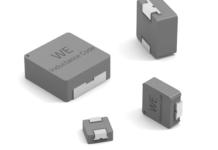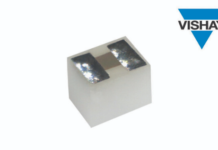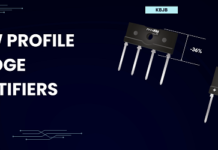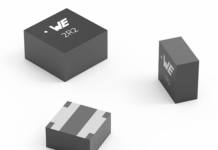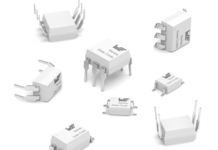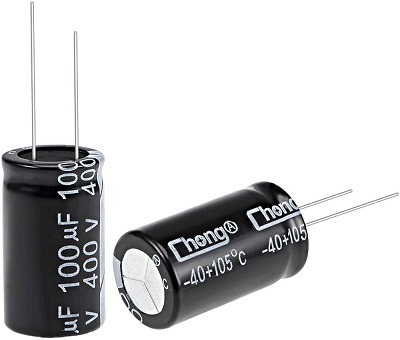
In the realm of electronics, capacitors hold an indispensable status and are commonly referred to as the “energy storage” components. It exhibits resistance to abrupt voltage alterations. They serve a crucial role in a vast spectrum of applications, from the simplest electronic devices to the most complex systems. However, that’s not all about it, this article delves into the fundamental aspects of capacitors, elucidating their operation, characteristics, and diverse applications within electronic circuits.
Defining a Capacitor
A capacitor, in essence, is a passive electronic component engineered to store and subsequently release electric charge. A capacitor typically consists of two conductive plates attached on both sides of the insulator, which remain separated by a dielectric material. During the flow of electricity across the plates, the positive and negative charges are transferred within the conductor.
Thus, the design of the capacitors allows for electricity to be stored between the two metal plates. Various insulating materials, such as gasses, oils, ceramics, and resin, are utilized in their construction. Capacitors are available in different geometrics, including parallel plates, foil encasements, and multi-layer arrangements, with each type tailored to specific applications. The quantity of stored charges and the supported frequencies vary based on the insulator types and the capacitor’s structure. Consequently, it is imperative to make a judicious capacitor selection to meet the particular requirements at hand.
How do Capacitors Work?
Capacitors operate by virtue of their ability to store and release electric charge. Capacitance, the standard measure of this capability, is expressed in farads (F). Upon applying a voltage, electrons accumulate on one of the capacitor’s plates, leading to the creation of a potential difference. The capacitor continues to accumulate charge until the potential difference. The capacitor continues to accumulate charge until the potential difference across its plates matches the applied voltage. When discharge occurs, the stored charge is released, exerting an influence on various aspects of circuit performance.
Characteristics to Evaluate When Choosing a Capacitor:
The process of choosing the right capacitor necessitates the examination of various characteristics. Let’s dive into several key factors and characteristics:
- Voltage Rating ensures the capacitor is appropriate for your application. That is, it is able to handle the applied voltage without breakdown or failure.
- Capacitance Value determines how much electric charge the capacitor can store. It is important to choose a capacitance value that suits your specific needs.
- Tolerance indicates the permissible variation from their rated capacitance value. If precise capacitance is crucial for your application, select capacitors with a low tolerance rating.
- Stability for some applications is important as it directly affects the capacitor’s performance. Check the datasheet for information on a capacitor’s stability, especially if your circuit relies on precise and consistent capacitance values.
- In applications involving high frequencies Equivalent Series Resistance (ESR) becomes crucial as it represents the internal resistance of the capacitor and can affect its performance. For applications in low ESR capacitors, it is essential to maintain efficiency.
- Environmental considerations ensure that the selected capacitor is suitable for the operating environment. Note if your application requires resistance to moisture, chemicals, or other environmental factors.
- Some applications demand capacitors with long operational lifespans and high reliability. To assess the expected lifespan and reliability of the capacitor, review manufacturer data and specifications.
Applications of Capacitor:
Capacitors have a diverse range of applications in electronic circuits. They play a vital role in coupling and decoupling circuits to eliminate noise and maintain voltage stability. Timing circuits, including oscillators and pulse generators, rely on capacitors to achieve precise time intervals. When it comes to filter circuits, capacitors are employed to eliminate undesired frequencies from signals. Additionally, capacitors function as energy storage elements in backup power supplies and applications requiring transient response.
The Functionality of Capacitors across Different Circuit Types:
Capacitors serve diverse functions in electrical circuits. Within AC circuits, they bring about phase shifts and are employed for power factor correction. In contrast, when it comes to DC circuits, capacitors are instrumental in smoothing rectified waveforms and aiding in voltage regulation. High-pass and low-pass filter circuits make use of capacitors to regulate and influence frequency responses.
Charging and Discharging Mechanism of Capacitor:
The processes of charging and discharging capacitors are influenced by time constants and the incorporation of resistor-capacitor (RC) circuits. Capacitors can effectively release their stored energy when coupled with resistors, making them valuable components in applications such as flash photography and timing circuits.
Practical Factors to Consider:
In the realm of capacitors, it is important to consider polarity, as various types come in both polar and non-polar variants. Modifying the arrangement of capacitors by connecting them in series or parallel can impact their overall capacitance. To ensure consistent performance across changing conditions, it is advisable to derate capacitors.
Diagnosing Issues and Ensuring Reliability:
Capacitors may experience failure stemming from short circuits, open circuits, or gradual degradation. Utilizing multimeters and ESR meters serves as helpful means to pinpoint problematic capacitors. When it comes to capacitor replacement, it is essential to follow recommended procedures and safety measures.
Future Trends and Innovations:
The trajectory of capacitor technology is characterized by ongoing developments in materials and design, shaping the landscape of this field. Capacitors are poised to hold a significant position in emerging technological domains, notably the Internet of Things (IoT) and renewable energy systems.
Conclusion:
Capacitors, the often-overlooked heroes of the electronics realm, play a pivotal role in facilitating a wide range of critical functions in modern technology. Mastering the essentials of capacitors empowers engineers, hobbyists, and enthusiasts to unlock their potential for groundbreaking designs and innovative applications. In an electronic landscape saturated with capacitors, these unassuming components persistently influence and shape the ongoing evolution of technology, promising a horizon filled with exciting opportunities.



